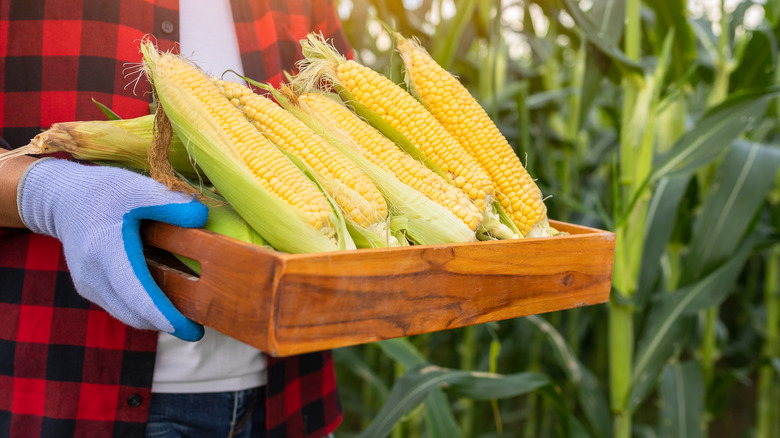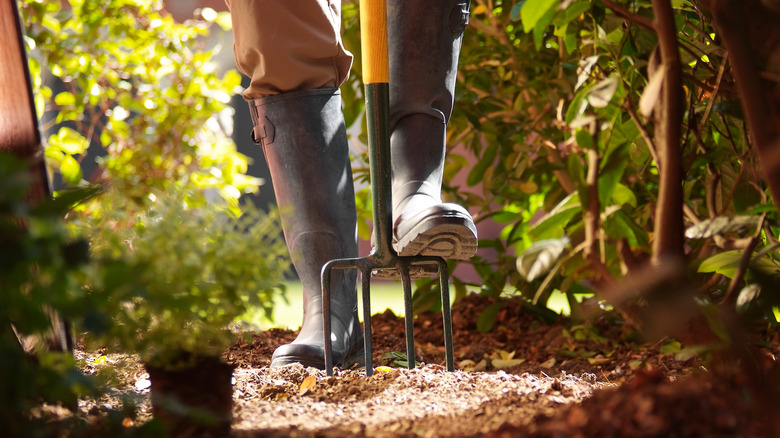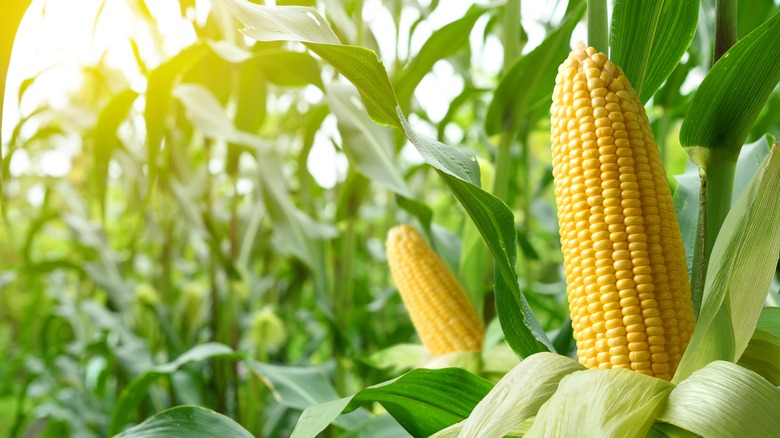How To Grow Sweet Corn In Your Garden For A Tasty Golden Harvest
We may receive a commission on purchases made from links.
As a sun-hungry vegetable that can handle the summer heat, sweet corn is steeped in summer traditions. We know it should be "knee-high by the fourth of July," and that no barbecue get-together is complete without an ear or two on everyone's plate. Anyone who has grown their own vegetables knows how much better they taste fresh from the garden, and there's no reason not to welcome sweet corn to your garden plot.
Sweet corn can grow in a shockingly wide variety of climates – USDA zones 2 to 9, covering areas from Texas to Alaska. Yet people balk at the thought of adding it to their vegetable gardens. Shelve your worries, though, because growing sweet corn in your garden is simpler than you've heard. New varieties with shorter growing times and better cold tolerance make things easier. By choosing the right variety for your region and taking special care, you won't need to miss out on the chance to grow your own golden harvest.
Preparing to plant your corn
The three main factors to consider for growing sweet corn are sun, temperature, and soil. Choose seeds that have been adapted for your region. Sweet corn varieties mature in as few as 60 days and up to 100 days, so match your variety with the length of your growing season. Stick with planting one kind of sweet corn since some kinds of corn can cross-pollinate easily and lead to less-tasty results. If you live in a colder region, give Alaskan-bred Yukon Chief sweet corn from Victory Seeds a try.
Pick a spot and prep your soil for successful planting before you get out your seeds. Corn grows best with 8 to 10 hours of sunlight per day. Sweet corn also eats up lots of nitrogen as it grows, so performing a soil test and adding any necessary supplements before planting is wise. See if your local university extension offers free soil tests. If not, Amazon offers testing kits that can measure both pH and nutrient levels. Till the top 6 to 8 inches of soil, and increase its health by adding compost or manure to your garden before planting.
Many home gardeners avoid planting corn because of the amount of space it needs to grow. However, a 4x4-foot plot can accommodate six plants in two rows of three stalks, possibly bringing in a decent yield.
Caring for your corn, from planting to harvest
The best time to plant corn for a bountiful harvest is when soil temperatures are in the 60 degrees Fahrenheit range. However, in colder regions, you can get away with starting seeds in soil as cool as 55 degrees by either planting them as shallow as ½ inch and/or by using a dark-colored row cover like Growers' Solution Landscapers Planters Paper Mulch.
Corn is wind-pollinated, meaning that male plants' pollen is carried to female plants by the breeze rather than relying on animal pollinators. You can help your corn stalks pollinate each other by planting them in blocks rather than long rows. When planted in the latter configuration, pollen can blow away rather than mix among the plants. Once your soil is ready, sow the seeds one inch deep, 3 to 4 inches apart, in rows about 2 feet apart. After seedlings appear, thin the plants to between 6 to 12 inches from each other.
Regular watering is a must for sweet corn. Irrigate your plants if your area receives less than 1 inch of rain per week. Expect to water more frequently if temperatures are high or if your soil is sandy. Once your plants have four or five leaves that have spread away from the stalk, fertilize them with more nitrogen. You'll know the ears are ready to pick once the tips of the silks turn brown and the kernels in the center of the ear have matured, about 20 days after the first silks appear.


